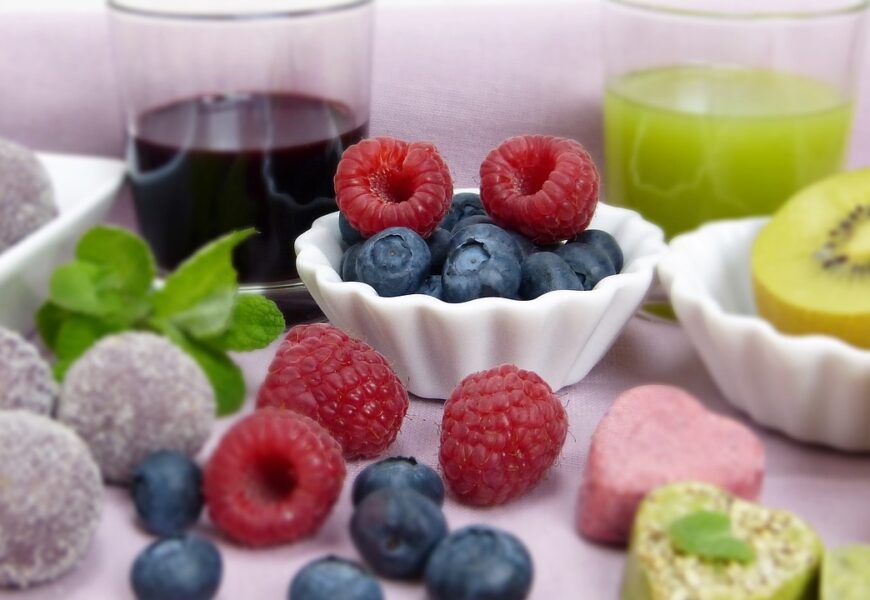Potassium is an essential mineral found in a variety of foods. It supports healthy neuron and muscle function. Not only this, but it also caters to the need, which involves keeping the fluid in a balanced proportion. The same aids regular heartbeat, as well. The kidneys are essential for controlling blood potassium levels. Individuals who already follow a strict medication prescription might need a change.
The change involves modification of their potassium consumption under medical supervision. This article covers all the bases, including who should follow a low-potassium diet and whether it’s the best option for them. So, let’s get started right away and contribute to this educational blog. It is worth noting that his article took a lot of effort, thought, and investigation.
A Complete Guide On Low Potassium Diet
First, scan this section before making a large yes-yes or no-go decision. A low-potassium diet menu aims to keep daily potassium consumption to 2,000–3,000 mg. This is less than the 4,700 mg daily allowance for healthy individuals. The height and weight of an individual determine the precise amount of potassium required.
Fruits: Limit yourself to one to three servings of low-potassium fruits, such as grapes or apples.
Vegetables: Include two to three servings of low-potassium veggies, including corn or carrots.
Foods High in Dairy and Calcium: Consume one to two servings of low-potassium foods, such as cottage cheese.
Meat/Plant-based Protein: Try to consume three to seven portions of low-potassium foods. You can try shrimp or turkey.
Grains: Even grains can do wonders. Consume four to seven servings of low-potassium grains, such as noodles or rice.
Potassium Restrictions: Who Needs Them?
Foods contain the mineral potassium, which is responsible for cell fluid equilibrium, muscle health, and stable blood pressure. The aim that one should strive for per day must be around 2,000 to 3,000 mg on a low-potassium diet.
Well, the kidneys stabilize the potassium levels. They do this by excreting the excess through urine. However, if this equilibrium gets disturbed, then it can lead to severe burns, HIV, diabetes, heart difficulties, kidney disease, Addison’s disease, or alcoholism. It is even seen that several drugs also impact potassium levels depending on an individual’s body. Medications such as beta-blockers, ACE inhibitors, immunosuppressants, antibiotics, diuretics, heart medications, and mood stabilizers may have similar effects. As a result, one should immediately shift to a low-potassium diet menu.
Source: Freepik
Controlling potassium levels is essential for optimal health. Although excessive potassium may not cause symptoms, it can seriously damage the heart. A low potassium diet carries the treatment of hyperkalemia and prevents these problems from worsening. It’s crucial to follow the doctor’s recommendations. The same is essential when selecting the best low-potassium diet menu. Blood tests help one closely stay updated with the optimum levels. To ensure your health continues, your doctor will help you get through the low-potassium foods stage.
Do you also know babies’ blood potassium levels are higher than adults? They mainly have greater potassium levels. Well, this is because of decreased renal function.
Source: Freepik
Items on a Low-Potassium Diet to Steer Clear of
Dark-coloured sodas: These drinks have added phosphorus. The detrimental effect that one might get in contact with might be super bad for renal health. How about switching to low-potassium foods instead?
Avocados: Although rich in nutrients, avocados contain a lot of potassium. Therefore, people with kidney illnesses who need to restrict their potassium intake should avoid them.
Canned foods are probably the most talked-about food items. Many canned foods include a lot of sodium as a preservative. To put it another way, salt is strictly forbidden for those who suffer from kidney problems.
Whole Wheat Bread: Whole wheat bread is nutrient-dense and a must for a healthy life. However, people with renal issues should avoid it.
Brown Rice: Due to its high potassium and phosphorus content, brown rice requires portion control or the search for substitutes, similar to whole wheat bread.
Bananas: Because of their high potassium level, people with potassium limitations may need to limit or avoid consuming bananas.
To Sum It Up
In conclusion, controlling potassium consumption becomes an essential aspect. Especially, if we refer to people having kidney problems. Instead, they should focus on completing their dietary needs. These days, everyone’s body requires one or the other. And for that, there lies a big necessity for constant observation and modification.
Reduce salt intake in case of renal health. Instead, find out whether there are any available alternatives on the market. Remember that the majority of salt replacements contain potassium.
Working together with medical specialists might do wonders for you. But if you seek something strong then foods low in potassium are the best possible way. They will most definitely help you combat whatever it is.
References
Dansinger, M., & Booth, S. (January 31, 2023). How Can You Eat Less Potassium? WebMD.
Chin, K., Berkheiser, K., & Ajmera, R. (November 1, 2023). Foods to Avoid with Kidney Disease.







